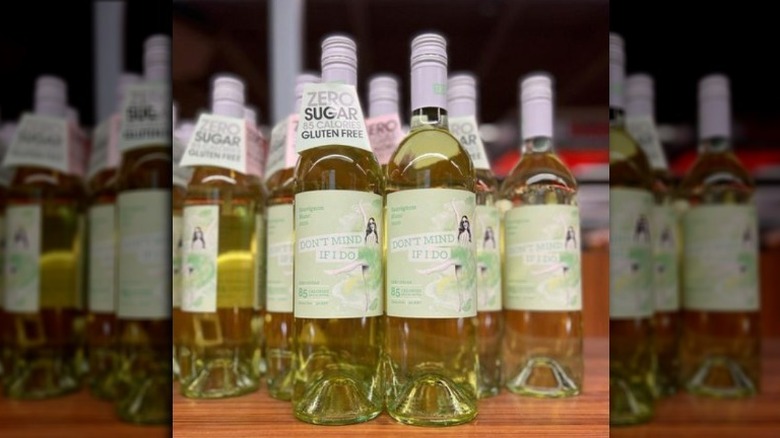Aldi's New Wine Claims To Be 'Zero-Sugar' - Here's What That Means
Dry January is about to end. So buyers are naturally readying themselves for a most moist February. Adventures in Aldi, the non-affiliated Instagram account, is happy to help. Two days ago, they uploaded a post highlighting Aldi's Don't Mind If I Do sugar-free and gluten-free Sauvignon Blanc. The wine has the citrus-y aroma of grapefruit mingled with fresh cut grass and retails for just $7.99 per 750 ml bottle.
"Don't Mind If I Do on a Friday night?! Okay, yes plz!" the account declared. "This zero sugar wine looks prettyyyyy dang good! Have y'all tried it yet?! I know there are several other zero sugar wine options at Aldi! I would love your thoughts." And according to the comments, many had. "It's great!!" one insisted. A second agreed, saying, "I tried the Pinot Noir & it was delicious! I would definitely buy it again."
There were also some negative comments. "I HATED this. Poured out the entire bottle," one person said. "It's awful honestly," another added, signaling that Dry January could be extended.
Does sugar-free wine actually exist?
Some wine drinkers may pass over wines without sugar and gluten, but still find themselves fascinated by the concept. After all, sugar is a key part of the fermentation process. In fact, you can't make wine without sugar. As Usual Wines explains, sugar-free wine is a misrepresentation, of sorts, because all alcohol is derived from sugar. That said, there is a vast range between the sugar content of wines available with some types having around 1 to 2 grams per liter and others having more like 100 to 200 grams per liter.
According to Bright Cellars, the grapes used in the wine-making process have natural sugars. But, as the fermentation process takes place, these sugars are turned into alcohol by yeast. As for when the process stops, that depends on how much sugar is desired. So, in this case, with the Don't Mind If I Do wines, the fermentation was likely allowed to continue for some time so that more of those sugars were turned to alcohol, creating for a lower sugar count and a higher alcohol content.

